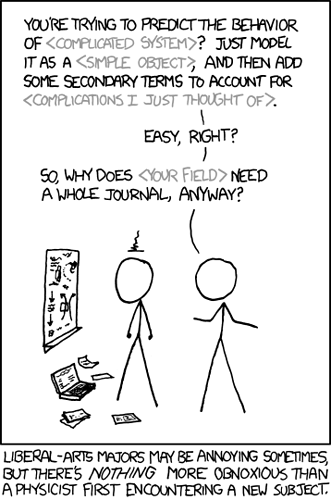I interned with a guy who had hundreds of citations. https://en.wikipedia.org/wiki/Leland_Clark
It’s tempting to believe that physicians are logical, meticulous thinkers

Aheh. My only experience with doctors while dulting was of uncomfortable young men out of their depth with no clue how to deal with their daily workload of body-mechanic Standard Work.
Putting words around strategically fraudulent science:
From the comments. Almost there, but after describing a regular engineering process the commenter falls flat on their face with righteous indignation.
Decoupling is probably OK when you’re doing a fluids simulation (not compressible? Throw that out. Temperature the same everywhere? Throw that out. Etc.)
But human traits? Behavior? Social structures? A little harder maybe.
Try unworkable. Engineers don’t do psych unless they’ve ever been on the outs. By outs, I mean fucked by some power structure. The onion, their parents, corporate manglement, way before you get to the structures that enforce underclass status based on race or being disabled or just a weirdo who had a bad day.
When an engineer does psych without knowing real life, the rabbitholes are endless.
Trying to simplify things is an important part of figuring them out. Thinking it’s the only part – really, even assuming it must be the most important part of complex things like societies – is basically what they call engineer’s disease.
See also the libertarian tradition “of course all policy should be decided by purely Socratic reasoning from premises that sound obvious to me”, which turns out to have an awful lot of overlap. Real understanding is less about knowing how to apply tools then where to apply them.
I have a hammer. This problem is just an unusual nail.
It’s a rivet. Need a backing plate of some kind.
What, we don’t have a working psychohistory yet?
I guess I was being a leetle sarcastic with my
Linear differential equations? How quaint.
Actually, they’re nonlinear. But computers can solve anything! 
My point exactly. Harder to isolate each component in turn.
somebody does, but they’re making billions of dollars with it instead of submitting it to peer review
Good point.
Will a hologram of Mark Zuckerberg in a wheelchair appear every 50 years?
Dr. Stiassny’s team suspects that the mondeli bureau live in these deepwater canyons, and are occasionally plucked up by the currents that churn along the rock walls. They are rocketed hundreds of feet up to the surface, the nitrogen bubbling out of their blood. The same bends that kill them make their diets a mystery, bursting their swim bladders and pushing out the contents of their guts.
For the first time in its 174-year history, the Smithsonian has released 2.8 million high-resolution two- and three-dimensional images from across its collections onto an open access online platform for patrons to peruse and download free of charge. Featuring data and material from all 19 Smithsonian museums, nine research centers, libraries, archives and the National Zoo, the new digital depot encourages the public to not just view its contents, but use, reuse and transform them into just about anything they choose—be it a postcard, a beer koozie or a pair of bootie shorts.
And this gargantuan data dump is just the beginning. Throughout the rest of 2020, the Smithsonian will be rolling out another 200,000 or so images, with more to come as the Institution continues to digitize its collection of 155 million items and counting.
